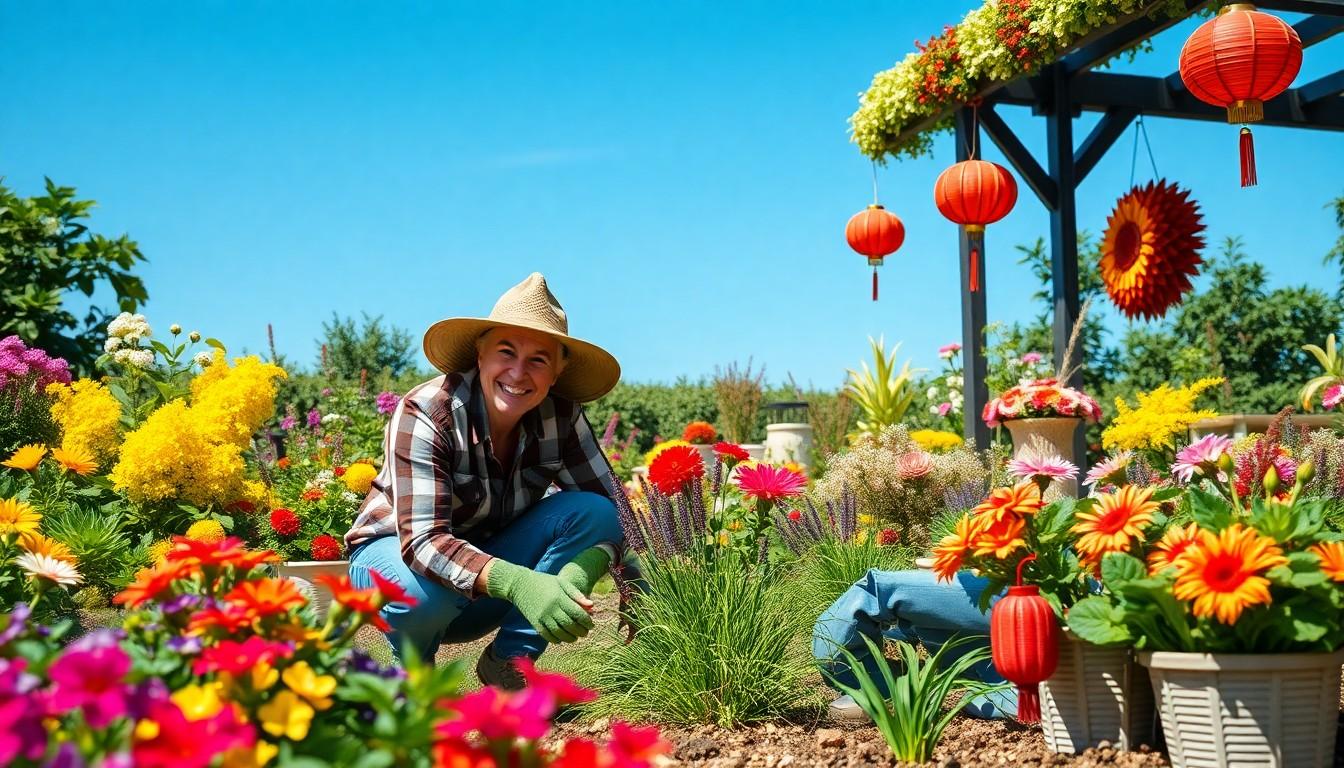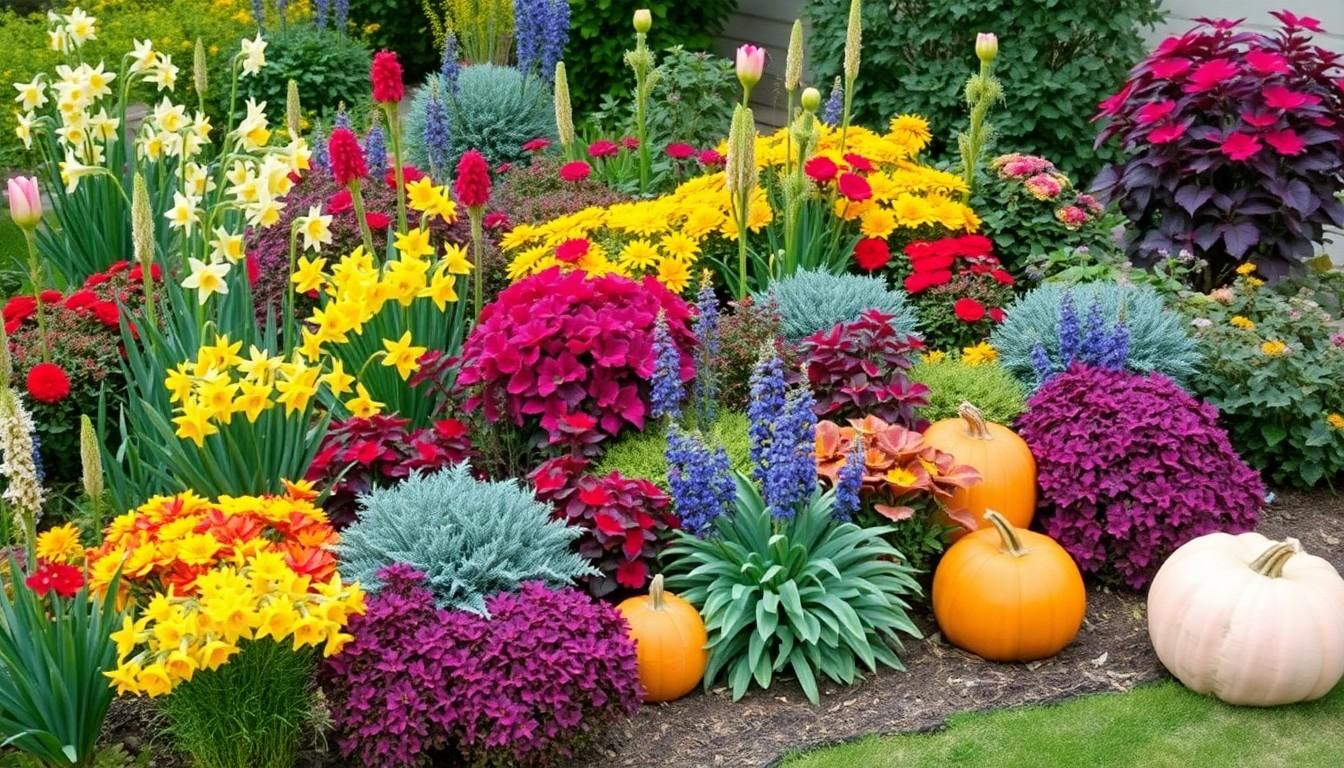Physical Address
304 North Cardinal St.
Dorchester Center, MA 02124

Imagine stepping into a garden that feels like a perfectly curated wardrobe—each season brings a fresh look, showcasing the best plants for the time of year. This style of design thrives on seasonal compatibility, making it not just a feast for the eyes but also a clever way to keep your outdoor space dynamic and engaging.
With a little planning, the right plant materials can transform a dull patch of soil into a vibrant tapestry that changes with the seasons. Who wouldn’t want to impress their neighbors with a garden that’s as stylish as their favorite autumn sweater or spring dress? Embracing this design philosophy means saying goodbye to the monotony of static landscapes and hello to a flourishing, ever-evolving masterpiece.
Seasonal compatibility plays a crucial role in garden design, enhancing aesthetics year-round. Thoughtfully selecting plants based on seasonal attributes creates a dynamic and inviting outdoor environment.
Understanding seasonal compatibility involves recognizing how different plant materials perform throughout the year. Some plants thrive in cooler temperatures while others flourish in warmer climates. Selecting plants that complement each growing season ensures a seamless transition in colors, textures, and overall design. When specific groups of plants bloom or change color concurrently, they enhance visual harmony. This strategic integration of plantings results in a more engaging visual experience, highlighting nature’s cycles.
Benefits of seasonal plant materials include versatility and sustained interest in garden aesthetics. Plants that adapt well to seasonal changes provide varied visuals, creating a landscape that evolves and surprises. Seasonal interests motivate gardeners to spend time outdoors across different times of the year. Additionally, utilizing diverse plant materials promotes biodiversity, resulting in healthier ecosystems. A garden that showcases seasonal variations fosters connections with nature and enhances overall well-being for viewers and caretakers alike.

This design style thrives on the seasonal compatibility of plant materials, resulting in an ever-evolving landscape. Understanding how to effectively implement its key elements promotes dynamic and engaging outdoor spaces.
Choosing the right plants involves considering their seasonal performance. Certain plants thrive in spring while others shine in autumn. Grouping plants with similar blooming periods allows for vibrant displays throughout the year. Timing plays a crucial role in ensuring that plants bloom together. For instance, selecting early bloomers like daffodils alongside late-season perennials creates layers of color. Sustaining interest with various textures enhances visual appeal. Combinations that include summer impatiens and fall asters maintain continuity in the garden’s aesthetic.
Visual harmony stands at the forefront of this design style. Selecting plants that transition smoothly in color emphasizes seasonal change. Strategically placed foliage can provide a backdrop for colorful blossoms, establishing a cohesive look. Varied heights among plants create intrigue and depth in the landscape. Incorporating seasonal decorations, like pumpkins in autumn or evergreen arrangements in winter, adds another layer of seasonal representation. Ultimately, thoughtful plant placement enhances aesthetic enjoyment, resulting in gardens that delight throughout the year.
Seasonal compatibility of plant materials significantly enhances sustainability in garden design. This design approach encourages eco-friendly practices and minimizes environmental impact.
Utilizing native plants increases resistance to local pests and diseases. Native species require less water, reducing irrigation needs and conserving resources. Adopting organic gardening methods further promotes soil health and biodiversity. Composting plant waste from seasonal maintenance enriches the soil, fostering a healthier ecosystem. Cultivating a diverse range of plants attracts beneficial insects, which naturally control pest populations. Greater plant diversity supports various wildlife, promoting a balanced habitat in the garden.
Selecting perennials that thrive in multiple seasons lessens the need for frequent plant replacement. Seasonal shifts in the design allow for the composting of expired plants, minimizing landfill contributions. Reusing cuttings or divisions from established plants can generate new growth without additional purchasing. Cardboard and biodegradable materials provide eco-friendly options for temporary seasonal displays. By focusing on seasonal designs, gardeners prevent stagnant areas that accumulate debris, resulting in cleaner and more sustainable landscaping.
Incorporating seasonal compatibility in design offers practical benefits for various settings. Understanding how plants interact with changing seasons enhances garden aesthetics.
Residential gardens benefit immensely from seasonal designs. Homeowners can choose plants that bloom or change color at different times of the year. Combining perennials and annuals provides continuous interest. For example, spring bulbs like tulips can complement summer-blooming roses. Seasonal decorations, such as autumn wreaths or festive lights, enhance the visual narrative. Grouping plants based on their seasonal performance supports a vibrant, dynamic garden that invites admiration from neighbors. To complement your seasonal garden design, consider creating custom printable party invitations to invite friends and family to enjoy your beautiful outdoor space.
Commercial spaces leverage seasonal compatibility to enhance curb appeal. Businesses can create welcoming environments that entice customers throughout the year. For instance, a retail garden can feature colorful flowers in spring and dynamic foliage in the fall. Rotating displays based on seasonal themes increases engagement and foot traffic. Utilizing native plants reduces maintenance needs, while also maintaining ecological balance. Overall, businesses benefit from designs that reflect seasonal changes, promoting a thriving atmosphere that resonates with patrons.
Embracing seasonal compatibility in garden design creates a captivating and dynamic outdoor space. By thoughtfully selecting plant materials that thrive at different times of the year, gardeners can achieve a harmonious blend of colors and textures. This approach not only enhances visual appeal but also fosters a deeper connection with nature.
A garden that evolves with the seasons invites ongoing engagement and appreciation. The strategic use of seasonal plants and decorations ensures that the landscape remains vibrant and inviting throughout the year. Ultimately, this design philosophy promotes sustainability and biodiversity while transforming any garden into a lively retreat that reflects the beauty of each season.